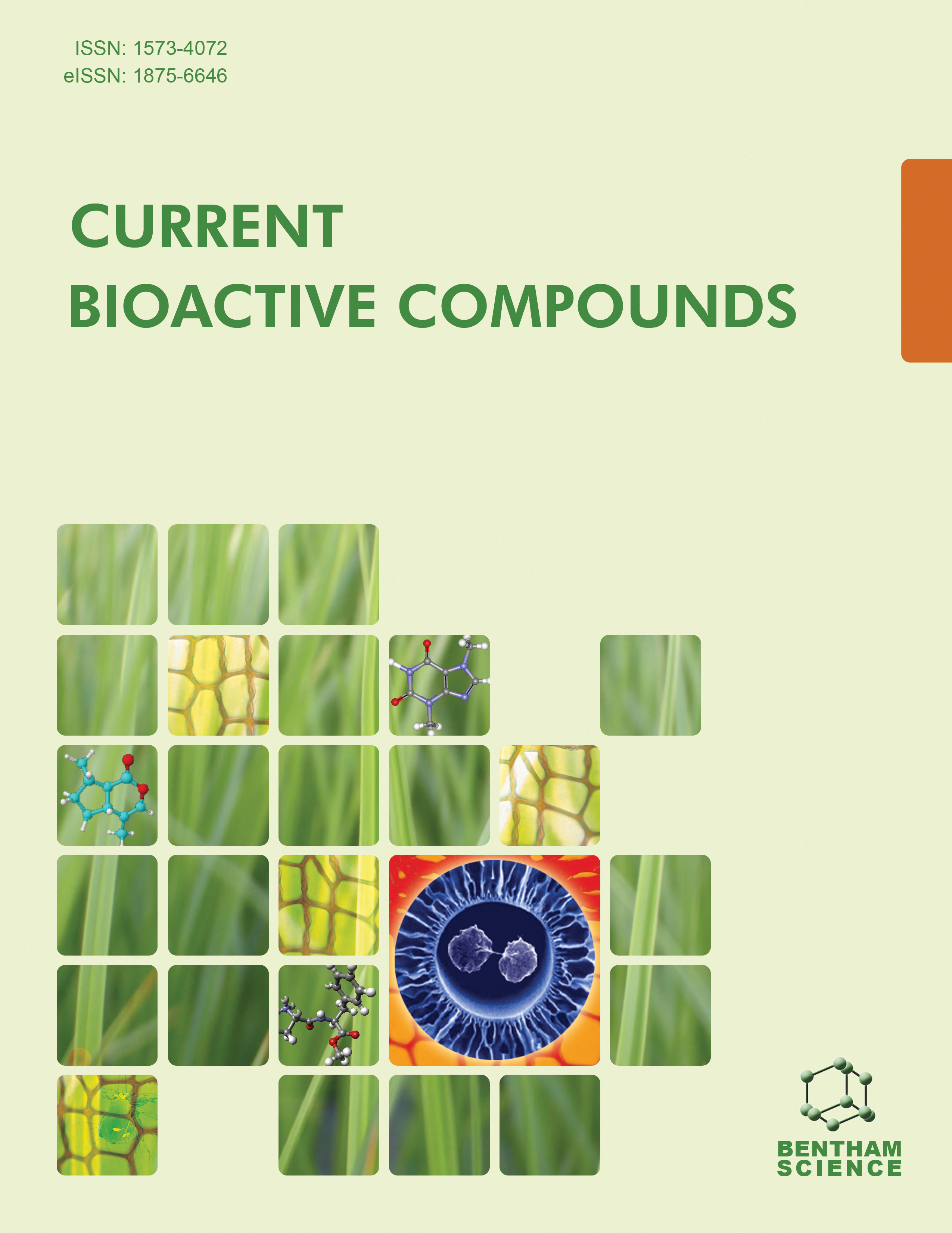- Home
- A-Z Publications
- Current Bioactive Compounds
- Previous Issues
- Volume 6, Issue 2, 2010
Current Bioactive Compounds - Volume 6, Issue 2, 2010
Volume 6, Issue 2, 2010
-
-
Bioactive Chromone Derivatives - Structural Diversity
More LessAuthors: N.F.L. Machado and M.P.M. MarquesChromones (1-benzopyran-4-ones) and chromone derivatives are naturally occurring compounds ubiquitously found in the plant kingdom, and therefore present in representative amounts in a normal human diet. These phytochemicals possess a wide spectrum of biological activities — such as anti-inflammatory, antifungal, antimicrobial, antiviral, antitumour and anticancer — mainly due to their well-recognised antioxidant pr Read More
-
-
-
Synergistic Effects of d-Chiro-Inositol and Manganese on Blood Glucose and Body Weight of Streptozotocin-Induced Diabetic Rats
More LessAuthors: Gilbert Gluck, Tatiana Anguelova, Douglas Heimark and Joseph Larnerd-chiro-inositol (DCI) and manganese were administered orally singly and together to streptozotocin (STZ)- induced diabetic rats for 21 days and blood glucose values and body weights determined. At blood glucose values above 500 mg/dL, values were unchanged with DCI, manganese sulfate, or both over ten days. Insulin was administered to reduce the hyperglycemia to approximately 300 mg/dL. Over 12 days, DCI alo Read More
-
-
-
Methoxyphenyl Porphyrin Derivatives as Phototherapeutic Agents
More LessAuthors: M. Elisa Milanesio, M. Gabriela Alvarez and Edgardo N. DurantiniTetrapyrrolic macrocycles occupy a central place in bioorganic chemistry. On the basis of their photophysical properties, natural and synthetic porphyrin derivatives have found specific biomedical applications, particularly in the field of detection and treatment of neoplastic tissues. Photodynamic therapy (PDT) consists in the administration of a photosensitizer, which is selectively retained by the malign cells. The sub Read More
-
-
-
A Review of the Nephrotoxicity of the Food Flavor Cinnamaldehyde
More LessAuthors: Sivakumar Gowder and Halagowder DevarajFood additives have been used by mankind for centuries. Most food additives are considered safe; however, some are known to be toxic or carcinogenic. Aldehydes occur as natural (flavoring) constituents in a wide variety of foods and food components. This review highlights the nephrotoxicity of the major flavoring agent - cinnamaldehyde. Cinnamaldehyde has been in public use since 1900. It is a yellowish liquid Read More
-
-
-
Nitrogen-Containing Fused-Heteroaromatic Compounds as Anti-Bovine Viral Diarrhea Virus (BVDV) Agents
More LessAuthors: Hiroshi Aoyama, Masanori Baba and Yuichi HashimotoBovine viral diarrhea virus (BVDV) infection is distributed worldwide, and is responsible for a major loss in cattle leading to significant economic loss to producers. Although vaccines are used in some countries in an attempt to control the pestivirus disease, the degrees of success are variable. An alternative approach could be the use of anti-BVDV agents. Recently, a number of anti-BVDV compounds have been reported. However, Read More
-
Volumes & issues
-
Volume 21 (2025)
-
Volume 20 (2024)
-
Volume 19 (2023)
-
Volume 18 (2022)
-
Volume 17 (2021)
-
Volume 16 (2020)
-
Volume 15 (2019)
-
Volume 14 (2018)
-
Volume 13 (2017)
-
Volume 12 (2016)
-
Volume 11 (2015)
-
Volume 10 (2014)
-
Volume 9 (2013)
-
Volume 8 (2012)
-
Volume 7 (2011)
-
Volume 6 (2010)
-
Volume 5 (2009)
-
Volume 4 (2008)
-
Volume 3 (2007)
-
Volume 2 (2006)
-
Volume 1 (2005)
Most Read This Month
Article
content/journals/cbc
Journal
10
5
false
en

Most Cited Most Cited RSS feed
-
-
Podophyllotoxin: Current Perspectives
Authors: Ying Qian Liu, Liu Yang and Xuan Tian
-
- More Less

